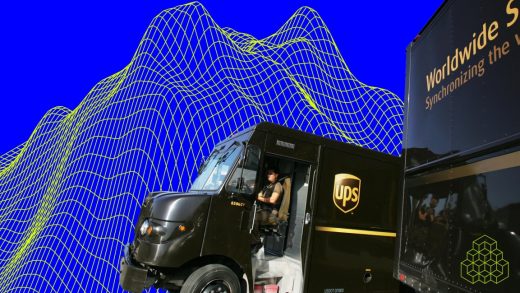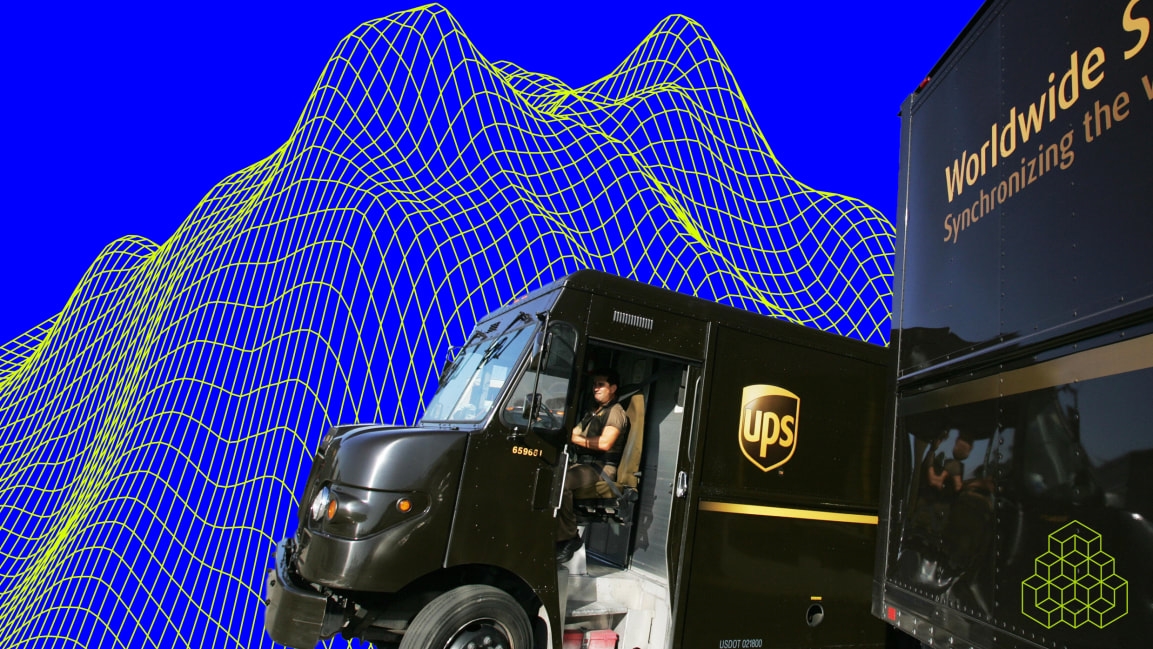Why UPS CEO Carol Tomé is not worried about competing with Amazon
When the pandemic erupted last spring, few businesses were more essential than the United Parcel Service. As the world’s largest small-package delivery company, UPS and its iconic brown trucks kept the world spinning by materializing fresh groceries, trendy exercise bikes, webcams and microphones, and hand-stitched face masks on the doorsteps of the home-bound billions. In a recent conversation for the Fast Company Innovation Festival, editor-in-chief Stephanie Mehta sat down with Carol Tomé, who joined UPS as CEO in June 2020, to discuss how the 114-year-old company was able to stay nimble during the COVID-19 crisis, and how the historic challenges of the past year could usher in an era of change for the legacy courier.
On culture and getting hip
UPS made headlines last year for a 21st-century policy shakeup that relaxed rules prohibiting beards, long hair on men, facial piercings, and tattoos, a move overseen by Tomé. “To be an employer of choice,” says Tomé, “we want UPSers to bring their real, authentic selves to work. They should be able to bring facial hair or natural hair.” The former tattoo rule, Tomé adds, was “more restrictive than the U.S. Army . . . In the summertime, it gets hot, and our UPSers still had to cover up their tats! Way too uncomfortable, so we took care of that.”
On farming big data
According to Tomé, UPS handles 25 million packages daily, representing roughly 2% of the entire world’s gross domestic product. That’s a treasure trove of precious data: “We know what’s being delivered to your home, every day, and by whom” says Tomé, who marvels at this “not from a Big Brother perspective—but from an information perspective.” While the company is still figuring out how to sift the data from “dirty pools” into a clean system, it says it’s exploring potential commercial applications, including selling it to companies looking to consolidate shipments and reduce their carbon footprint, or firms hoping to personalize their marketing tactics.
On the sustainability problem
UPS emits about 30 million metric tons of greenhouse gases each year, a number that would take a forest of trees the size of Washington state to offset. The company has outlined a goal to become carbon neutral by 2050, which is driven by curbing the use of fossil fuels, but “the biggest challenge we have is aircraft—there’s just not enough alternative fuel out there,” says Tomé. To tackle that, the company may have to rethink its entire supply chain for efficiency—for example, it often flies planes full of packages out of Asia, then routes them back completely empty.
On the Amazon relationship
You could think of Amazon as UPS’s classic frenemy: The e-retailer’s recent sales boom has supercharged its business with the courier, but at the same time, it’s no secret that the online vendor is working to develop its own shipping network. Tomé appears unbothered by this dynamic: “Enterprise customers who have scale figure out the best way to optimize all supply chains, be it their own, UPS, FedEx, the post office, regional players . . . Amazon is using us where they need us—great! Together, we can take care of the demand for small packages around the world. And as long as it’s mutually beneficial, that’s a good thing.”
On American infrastructure
“We care a lot about infrastructure,” says Tomé. Why? UPS’s fleet of trucks and planes travels 3.4 billion miles in the United States per year—and every 5 minutes of traffic delays on the ground costs the company $114 million in lost productivity or extra gasoline. Delivery drivers, meanwhile, are stuck logging longer hours than they want. Among the fixes Tomé proposes are expanding the roadways to move people faster, and forging a public-private partnership to establish a fuel tax in the most densely populated areas. “A fuel tax can pay for a lot of the repairs that are necessary across the country,” says Tomé. “I suspect autonomous vehicles could be part of the solution as well, but that’s not near-term.”
(49)



